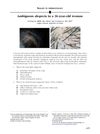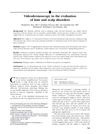Cutaneous Immunopathology of Androgenetic Alopecia
August 1991
in “
PubMed
”
androgenetic alopecia male pattern baldness inflammation biopsy Immunoglobulin M C3 basement membrane eccrine myoepithelial cells porphyrins pilosebaceous canal Propionibacterium acnes ultraviolet radiation complement cascade inflammatory mediators male pattern baldness Propionibacterium acnes UV radiation

TLDR Inflammation, possibly triggered by a specific bacteria and activated by UV radiation, may contribute to male pattern baldness.
In 1991, a study was conducted to investigate whether inflammation contributes to the development of androgenetic alopecia, commonly known as male pattern baldness. The study involved biopsy specimens from the bald scalp of 26 patients, with specimens from uninvolved scalp of these patients or from scalp of 8 volunteers who were not bald serving as controls. The results showed granular deposits of Immunoglobulin M or C3 (or both) at the basement membrane in 96% of the study patients and 12% of control subjects. Granular C3 was also deposited on eccrine myoepithelial cells in 31% of study patients, but none of the control subjects. Porphyrins were found in the pilosebaceous canal in 58% of study subjects and in 12% of control subjects. These findings suggested an inflammatory pathogenesis of androgenetic alopecia, possibly triggered by Propionibacterium acnes, which is known to produce porphyrins. Ultraviolet radiation may excite these microbiologic porphyrins, potentially activating C3 and the complement cascade, leading to the production of inflammatory mediators.


